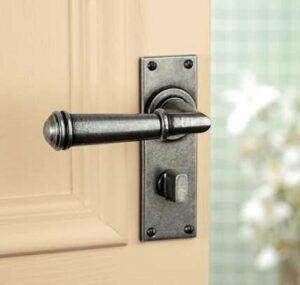Why is my door handle stiff? How to Fix Door Knob Sticking
29 November 2020 :: How To Guides
Why is my door handle stiff? How to Fix Door Knob Sticking
Door Knob or Door Handle Sticking?
Is your door handle or door knob sticking or stiff to operate? The cause could be one of several problems. We will take you through how to diagnose and fix your issue, step by step. The most common issue with sticking door handles is a problem with the tubular latch. The tubular latch is the mechanism working on the inside of the door, pictured right.
The tubular latch works by means of a spindle (metal bar) that passes through the follower (turning metal disc) set into the body of the latch. This transmits energy to the spring inside the latch body, which in turn retracts the latch bolt tongue, so you can open the door.
The most common cause of sticking door handles is some kind of malfunction within the tubular latch itself. To test this, firstly open the door and check that there are no obvious obstructions on the tubular latch plate such as loose screws, or signs of internal parts of the latch or lock poking through. After that, there are a few simple tests you can conduct that will diagnose what is causing the sticking door handle.
How to fix a Stiff Door Handle?
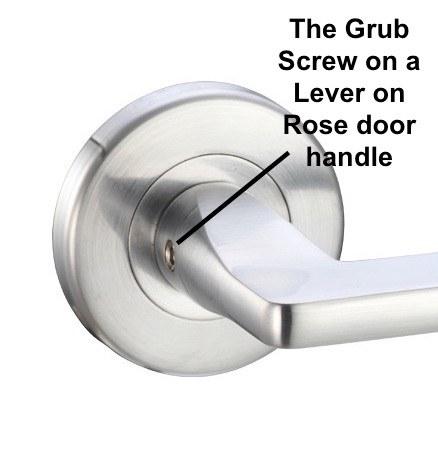
Step 1) It’s time to take a screwdriver and remove the door handle and latch from the door. Depending on the type of door handles you have, this should be a simple matter of removing the fixing screws or bolts that go into the door. After that, you can pull the door handles off the door. Note, Some door handles have a small grub screw on the neck of the handle, which holds the door handles onto the spindle. If this is the case, you will need to loosen this with a Hex or Allen key. (Tip: Do not fully unscrew the grub screw. They are lost very easily! Normally, only a quarter or half turn is necessary to loosen the grub screw enough)
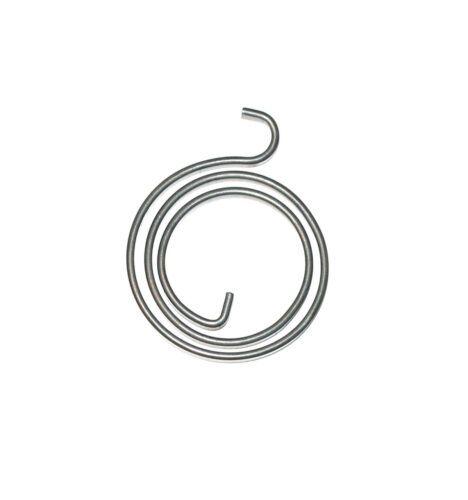
Step 2) Now that the door handles have been removed from the door, check on the rear of the plates for any obstructions or obvious signs of malfunction. Operate the handles several times with your hand, and check that they are able to operate freely. There will probably be a spring on the rear cam of the door handles, which looks like the spring pictured. Check that this spring is not broken or bent, and check that the door handles spring return back to a horizontal position. If the spring is broken, then you will need to either replace the spring, or failing that, replace the door handle set. If the door handle itself is seized, try applying some lubricant such as WD40, which might help loosen the seized components. If it is still seized after lubrication, you will need to replace the door handles.
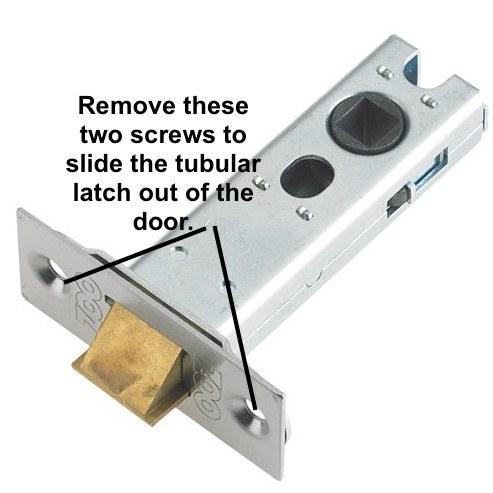
Step 3) If the door handles themselves appear to be in good working order, then your problem is almost certainly with the tubular latch. Now, remove the latch from the door. This should be a simple matter of removing two screws through the latch faceplate on the leading edge of the door. The tubular latch should then slide right out of the door. Once the tubular latch is independent of the door, you can diagnose the problem with the following checks.
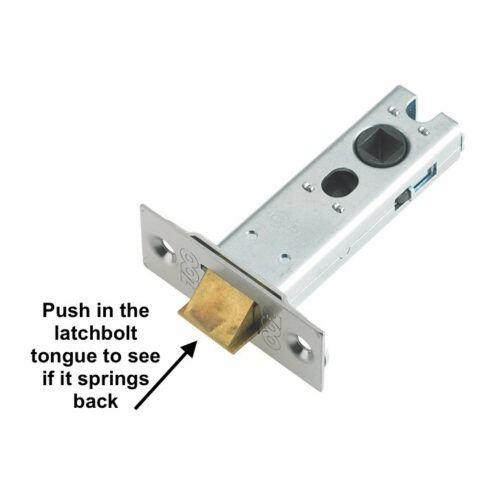
Step 4) Check around the latch body for any signs of wear or malfunction, such as loose springs or components poking out. Push in the latchbolt tongue with your finger, and see if it returns or not. If it does not, then a spring has broken inside the latch. Whilst pushing the latchbolt tongue in, check if it is possible to push the latchbolt all the way inside the latch body housing. If it is not possible to push it all the way in, (and the tip of the latchbolt is still poking out) then a spring or other component has broken inside the latch. Both of these scenarios require a replacement latch. It is not economical to repair a tubular latch.
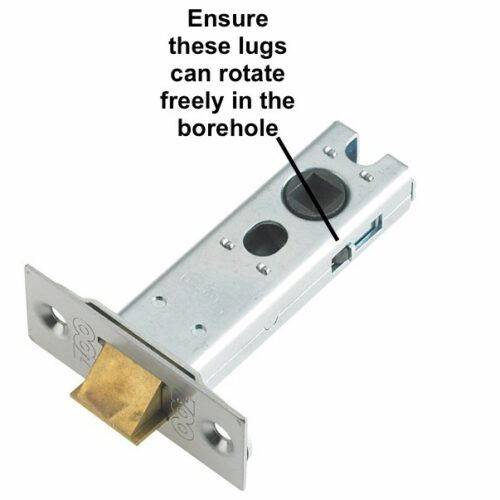
Step 5) If the latch appears to be working outside of the door, then there is one final problem to check for. The tubular latch has two rotating lugs on either side of the follower, where the spindle passes through. These lugs allow the follower to operate. It is possible that these lugs may have become blocked up with debris. It is also possible that when the tubular latch was installed, the borehole for the latch in the door was made too small, so these lugs are obstructed. If this is the case, you will need to bore out the hole in the door to a larger width. If either one of these scenarios is the case, it may have caused windup in the latch and broken some components inside the latch casing. You will need a replacement tubular latch.
Is your door knob sticking still?
Is your door knob hard to turn still? If you do need to replace your latch, at More Handles we offer a wide range of tubular latches to suit almost any size and style. Our recommended tubular latch is our Double Sprung Tubular Latch. It cannot be beaten for quality and durability for the price.
If you need assistance in measuring up to replace a tubular latch, or need some help in matching up a replacement door handle, then please do not hesitate to contact our helpful experts at More Handles HQ in Carlisle! We will be pleased to talk you through any technical aspect of replacing your door handles or tubular latches, and solve your problem with stiff or sticking door handles.
Tel: 01228 516 516
Email: sales@morehandles.co.uk
WEB - morehandles.co.uk

